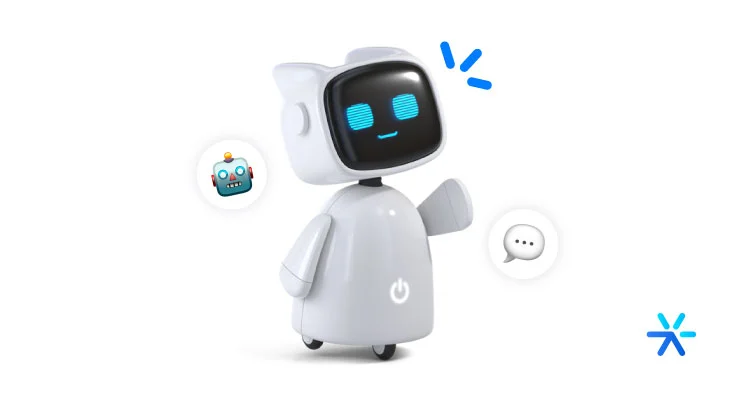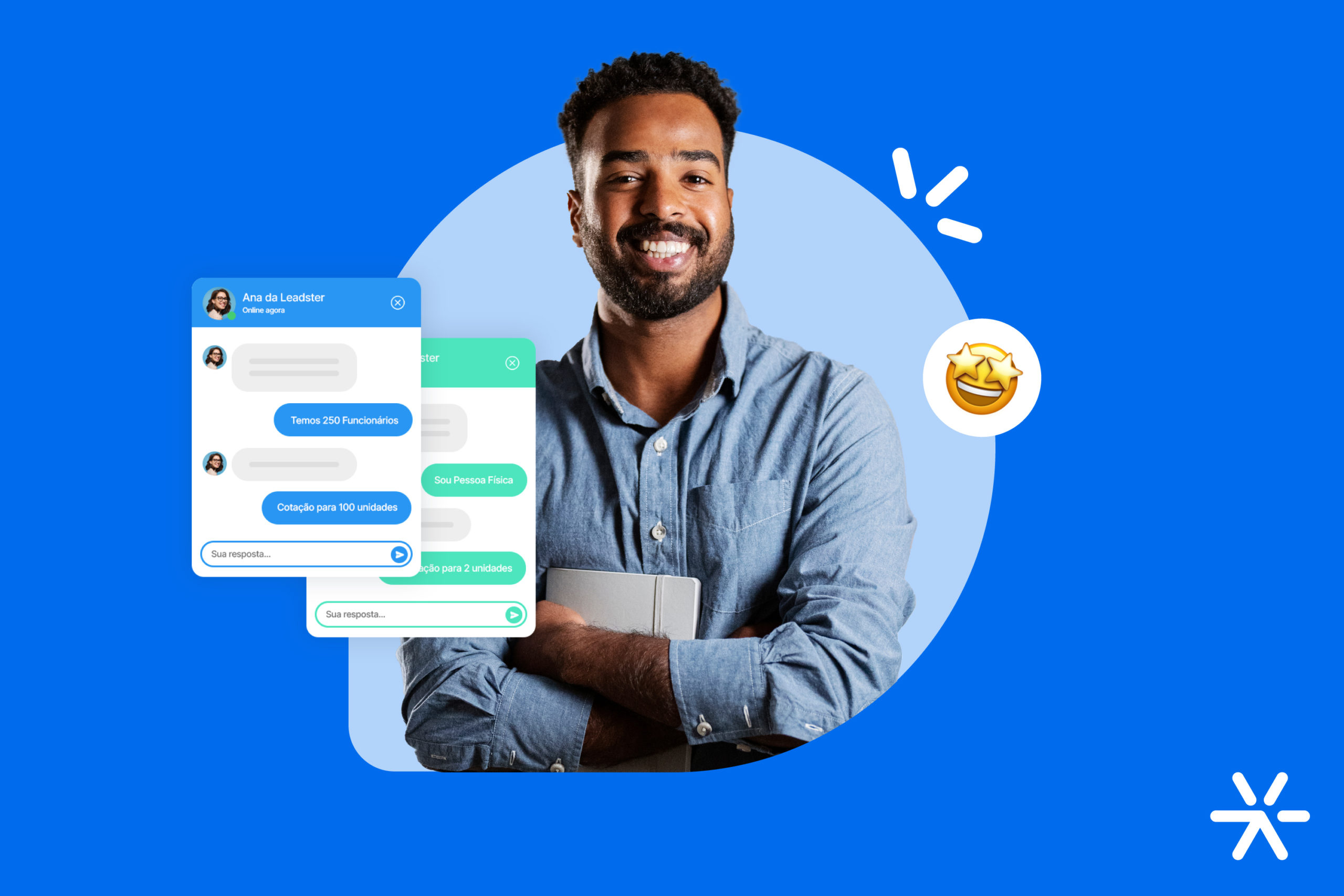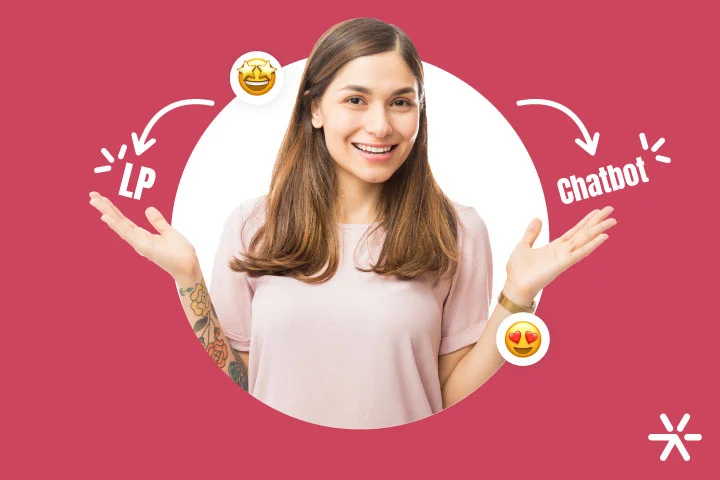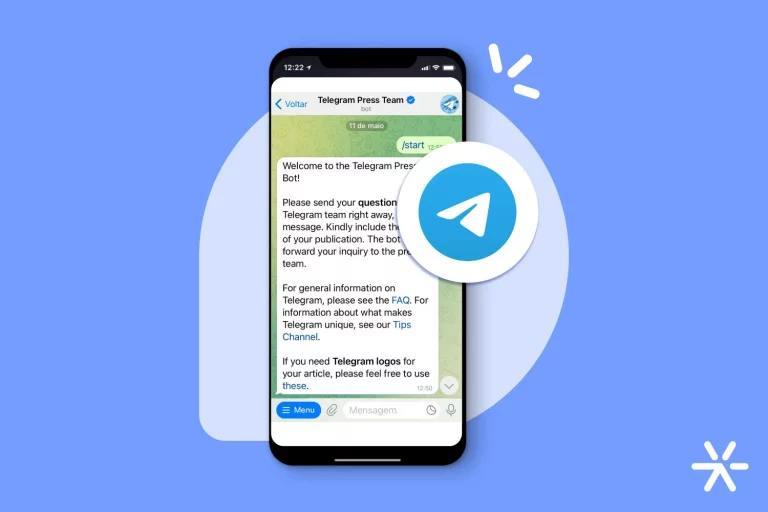Costumer Service Chatbots: All You Need to Know
Smart chatbot customer service is no longer just a trend; it’s gradually becoming the way to serve clients and visitors on your website.
The tools are becoming increasingly advanced, and what was once a daunting task is now becoming simpler with the help of chatbots.
Just a few years ago, this was unimaginable! Service was done over the phone, and that was it. Dealing with IVRs, in particular, was the biggest nightmare for most clients needing support.
Today, things have changed significantly. In fact, at least in sales, many clients prefer dealing with chatbots rather than humans.
Just a note: here at Leadster, we don’t use chatbots for customer service, only for lead generation.
But we believe so much in the potential of these tools to improve themarket that we couldn’t resist; we need to talk about customer service even without offering this functionality.
The topic is fun for us. And serious too: everything we’re discussing here is about the future. And thinking about it is the best way to make your company grow.
What are customer service chatbots?
Customer service chatbots are tools installed on your website — and on other channels we’ll see throughout the article — that provide automated initial assistance.
These types of chatbots have been around for many years and have always been widely used by companies with a large volume of clients.
Clients who also have a large volume of questions! 😅
Think of travel agencies, logistics companies, banks, internet providers — all these companies always needed large customer service teams.
These teams needed to be large because it was impossible to handle any type of service other than by phone.
From someone calling to get a second copy of a bill to knowing business hours, everything went through human attendants.
Chatbots work by triaging simpler queries, resolving those that can be easily resolved, and forwarding more complex information to human agents.
They are installed on companies’ websites in a straightforward manner, usually through platforms that handle most of the work almost automatically. You hire them, and in a few days, implementation occurs alongside your IT team.
But installing these chatbots is just the first step. To discuss what comes next, we need to understand another concept first: humanized customer service.
What is humanized customer service?

Humanized customer service is the term we use for the way of serving that considers the client’s experience.
The main goal of humanized customer service is to ensure that when the client contacts you, they feel represented by the service process.
Representation occurs in many ways. But the main one is recognizing the purpose of the complaint by the agent and quickly and satisfactorily resolving what the client needs.
This seems basic, and it really is. But it’s very common to find companies that prioritize their own processes over the client’s needs.
For example: transferring the client to other departments because the one they called couldn’t resolve the issue.
This is absolutely common, but it could be resolved by investigating the channels the client uses and trying to understand why the initial contact didn’t resolve the request.
Humanized customer service also values how communication is conducted. It considers that every client contact with support is an opportunity for relationship building between client and brand.
This part is easier to manage with a chatbot. If you have a support area with 30 agents, ensuring humanized service is much more difficult.
But with a chatbot, the message is standardized across all interactions, much more easily.
Therefore, intelligent customer service needs chatbots so much. Message standardization is guaranteed, adjustments are simple, and extensive training is not required.
How customer service is made today

But I’m getting ahead of myself talking about humanized service.
Especially when defining that chatbots are the best way to provide this service without showing you the other ways.
That’s why I’ve included below some ways intelligent customer service is provided, focusing mainly on automation resources, as everyone knows very well — even too well — how telephone service works, right?
Let’s go?
Chatbot for customer service
The chatbot for customer service — customer support, in a free translation — is what we’ve been discussing so far.
Through it, you can completely transform your service reality overnight with the creation of a few rules and workflows.
The chatbot in this context is easy to operate and measure efficiency. It saves time in a way that goes far beyond just providing service.
For example: if you realize that an idea for optimizing the service process will make a difference for your clients, you can simply change a workflow and measure it.
You can even create A/B tests to validate the idea before launching it to the general public.
If you were in the reality of an entire telephone service department — a small call center — you would have to undergo training and measure interactions for weeks.
All manually. You would need to create NPS measurements to understand what clients think about this change, interpret them, and only then take action.
This takes a lot of time. Chatbots are fantastic for this reason: they come with dashboards that transform all these actions into simple clicks, easily changeable workflows, and measurements that take hours, not weeks.
AI-powered chatbot
I need to talk to you a little about chatbots that use AI in customer service.
Because, after the launch of ChatGPT, customer service chatbots quickly sought the API to implement it in their systems.
The result is that today it is really possible to find several intelligent customer service chatbots that use AI, but not in the way many people imagine.
These chatbots use generative AI mainly to support agents but also to solve simpler cases.
The AI of these chatbots usually (depending on the tool you hire) gathers service information to suggest approaches for agents, acting as a virtual assistant during service.
Some more advanced ones, like Zendesk, even categorize requests based on urgency, the mood of the requesters, etc.
They also perform initial assistance. You create the workflows normally, but you can leave the message writing to AI to do at the moment, with the help of ChatGPT.
However, these messages are quite simple and entirely depend on your workflow. This part is still under development on most platforms, and many companies think two, three, four, or five times before putting it into practice.
Chatbots for WhatsApp and Telegram
Today, everything your intelligent customer service chatbot can do on your website can also be implemented on your WhatsApp and Telegram communication channels.
This is without much mystery and as simply as possible.
Most intelligent customer service chatbot platforms offer this functionality.
And the process is the same: you create your flows, test, launch, and modify as needed.
Chatbots for social media
You can also automate intelligent customer service on social media if needed.
This work is often done by the same platforms that offer chatbots on your website, WhatsApp, and Telegram.
Remember that some Facebook chatbots cannot be used on Instagram, and vice versa. The same rule applies to other social networks.
But there are also other chatbots specifically tailored to the reality of social media, with specific functionalities and measurement systems as well.
You can learn more about them in our article on the subject. Access by clicking right below:
➡️ 17 Chatbot Use Cases to Understand How They Work
Understanding the difference between types of chatbots

There are two main categories of chatbots in the market today: those focused on customer service and those focused on lead generation.
Leadster is the pioneer in lead generation chatbots here in Brazil.
Although both systems operate similarly in how they function, their goals are completely different.
I wrote this part of the article just to clear up some doubts and to help you understand which type of chatbot is ideal for your company.
Tip: It all depends on what your company needs most at the moment.
That said, let’s see the main differences between types of chatbots?
Customer service chatbot
This is the first type of chatbot, and also the most common. It’s what we’ve been discussing throughout the entire article.
The chatbot for intelligent customer service is designed for customer service and support, created with this goal in mind.
This means all its systems were created with the idea of service in mind.
It cannot offer functionalities aimed at conversion. They don’t identify where visitors come from or offer personalized materials depending on where they are on the site.
For example, you can’t install an intelligent customer service chatbot in a specific category of your site talking about X and another chatbot in another category talking about Y.
Because these chatbots aren’t even proactively programmed. That is, they don’t approach customers, and they shouldn’t: it’s customers who should approach them to ask questions.
This is the main difference between these chatbots and those focused on sales and marketing. More on that now:
Chatbot for lead generation
There is a second type of chatbot: the one focused exclusively on lead generation.
That’s our case here at Leadster. The entire chatbot system was created thinking about how to maximize your conversions.
The customization of flows, for example, is much more extensive. You can offer different messages for each of your website pages, if you want.
In fact, you can offer multiple messages for the same page, depending on whether the visitor interacted with the chatbot or not, through Smart Calls.
The lead generation chatbot operates with all the principles of CRO (Conversion Rate Optimization) in mind to ensure that anyone who enters your site won’t leave without at least a much greater chance of converting.
This chatbot doesn’t provide customer service. Everything it does is related to converting all visitors into leads. No waste.
It’s good to make this distinction because it’s common for people to hire customer service chatbots for this functionality and be disappointed.
For now, that’s all we need to discuss on the subject to continue in the text. But stay with me because in the end, I’ll bring a list of lead generation chatbot features.
For now, let’s go back to the subject of intelligent customer service:
How to implement intelligent customer service with chatbots?

Ok, so far we’ve talked about what intelligent customer service chatbots are and what intelligent service is in theory.
So we’re already well determined in the more theoretical part of the article. Everything you need to know to implement your strategy is already there. 😉
Now we need to put it into practice!
But how, where to start, and what are the first steps?
That’s what we’re going to talk about now. I’ve put together 5 simple steps for you to understand how the process of strategizing intelligent service for your company works in practice.
Grab a coffee because the conversation will be a bit long. Not too long, but with the details it needs.
Choosing the best tool
The first step is to choose the best intelligent service tool based on chatbots.
And there’s only one way for you to do that: testing.
In our article on the main live chat tools, we brought a list of 10 tools, all with their prices and plans in addition to their ratings on major B2B review aggregators.
And in this same article, we also selected the main intelligent customer service chatbots that offer free plans for you to test.
Below you’ll find the names and links to all:
Determining your goal and audience
Alright, have you already decided which tool you liked the most after your free trial?
So, the next step is to make the hiring? Hold on a little because you need to define what your chatbot’s goal will be first.
Who will it serve? What’s the demand? What are the questions it will answer?
It’s important to determine this — preferably even during the testing phase! — so you can decide the scale of your chatbot.
This has direct impacts on the price. Maybe you need service ranging from telephone to social networks. Or maybe you only need service on the website.
In addition to changing the price of the plan you choose in your preferred tool, some of them don’t even offer all these functionalities.
So, determine in advance who you will talk to and how. And take advantage of the free period to run some tests.
Then let’s move on to the next step:
Creating flows with writers
Don’t ignore the power of good writers when creating your service flows.
Beyond just writing what goes into your chatbots’ service, the writer also works on the strategic part, determining the simplest way to solve your customers’ situations.
Because of this holistic characteristic of their work, writers are needed even in cases of AI-driven service, did you know?
There’s a specific category of writers who do this work: UX Writers.
These professionals specialize in gathering technical and operational information about your process, and then conveying it to the audience through chatbot texts.
If you don’t hire this professional, even if it’s freelance, you’ll burden your team with creating texts and the entire service strategy unnecessarily.
Professionals like these are used to working on projects and don’t need to be hired full-time.
🤖 Learn more: Chatbot Flows and Scrips: How To and 6 Examples
Monitoring results and making necessary adjustments
After doing all of this, just hit launch!
Emphasize the “just.” Many of these tools really work this way: implementation is simple and takes at most a few days with the support of your IT team and Customer Success managers from the contracted platform.
The hard work really comes afterwards. You’ll need to check customer interactions and feedback to identify blind spots and communication misunderstandings.
And believe me, they will happen. It’s better if they happen early on to prevent further issues.
In most cases, you have access to usage statistics for your chatbot directly on your dashboard. Always monitor and don’t be afraid to make changes when necessary!
Which is better: a service chatbot or a lead generation chatbot?
The article is almost at its end, but we still need to understand what is more worthwhile: a service chatbot or a lead generation chatbot?
The answer is that there is no comparison. One has nothing to do with the other.
If you need to generate leads on your website, the best way to do it is with a lead generation chatbot, like ours.
Now, if you need to provide support to your customers, you’ll need a chatbot that does that job.
One doesn’t do the other, and the other doesn’t do the one. This distinction is important because many people think that, because they’re chatbots, both solutions are the same.
Far from it! They are only similar in technology, but very different in their objectives.
One of the first steps to implementing intelligent service on your website is to do research, right? And research involves doing a free trial.
In the next topic, I’ll show you how this process works here at Leadster. Test both and see which makes more sense for you:
Build a free chatbot today with Leadster
So, are you ready to run some tests?
Start with the service chatbot, but don’t leave ours for later. Do it right away to understand what a lead generation chatbot can deliver for you.
By the way, we have several integrations available, including with service chatbots themselves. Jira is one such case, but there are others that you can follow here in this link.
The process is super simple. Just click on this link to start your 14-day free trial!






